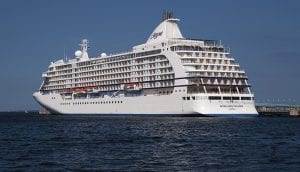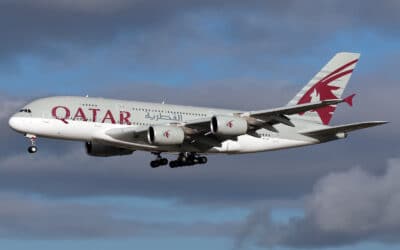Choosing a cabin on a cruise ship involves numerous and often competing issues. I’ve got seven tips to help you choose a great cabin on your next cruise.
 I’m on a multi-week cruise as I write this column. I’m visiting ports and seas “Down Under.” The weather has been mixed during the summer here, though it’s not stopped us from doing anything. Our past ship experience helped us choose a great cabin. Our cabin is a wonderful refuge for us during busy days and nights.
I’m on a multi-week cruise as I write this column. I’m visiting ports and seas “Down Under.” The weather has been mixed during the summer here, though it’s not stopped us from doing anything. Our past ship experience helped us choose a great cabin. Our cabin is a wonderful refuge for us during busy days and nights.
For some cruise passengers, however, their cabin experience is less than ideal, in large part because they took a cabin assignment with a mediocre to poor location or didn’t choose their cabin wisely.
Choosing a cruise ship cabin is a decision with multiple parameters and competing factors. Most travelers know the factors that go into choosing a hotel room. Choosing a cruise cabin includes some of those parameters, plus many more.
Numerous cruise ships have 20 or more categories of cabins, but those categories can generally be boiled down to five main cabin types.
Many cruise ships have 20 or more categories of cabins, but an analysis reveals that there are actually just five main cabin types: inside, inside view, ocean view, balcony and suite. The other categories are generally variations of these cabin types, distinguished by cabin size, view, physical and service amenities, deck, plus position between the bow and stern of the ship. The price of each cabin depends on all these factors.
Once chosen, individual cabins also have options, such as twin beds or a single queen/king bed, which need to be specified to the cruise line, preferably well before departure.
The titles of the cabin categories generally describe them well.
You can save money choosing inside or inside view cabins, but be sure that’s what you really want.
Inside cabins are typically the smallest, and have no porthole, window or door to the outside. On newer ships, they’re not as cramped as they were in the past and some have a large screen that shows what the view of the ocean would be if the cabin had a large door to the outside.
The cabins with a large screen showing an outside view are often called “virtual balcony” cabins. They’re commonly found on Royal Caribbean cruise ships and make inside cabins more palatable for many. The “virtual balcony” cabins still have no porthole, window or outside door, but the screen gives some passengers an illusion that they have an outside cabin. Most even have real curtains framing the screen to make it feel more real.
Inside view cabins are on some of the mega-ships. They have windows and may have balconies, but they face a view inside the ship, not facing the ocean. They face an open exterior or interior central area of the ship. More often than not, they face other interior view cabins on the opposite side of the ship.
Ocean view cabins face the outside of the ship, and have a porthole or large window facing the ocean, but have no door/balcony to go physically outside of the cabin to a private outdoor balcony area for that cabin alone.
Balcony cabins have a balcony (veranda) with access directly through a large glass door from the cabin, which allows passengers to be outside without going to a public area of the ship.
It’s important to understand that not all cruise ship suites have balconies.
Suites are the largest cabins on the ship. They typically have separate bedrooms from the remainder of the cabin, special perks and a wide variety of amenities, such as butler service. They may or may not have balconies.
Here are my top seven tips to help you choose your cabin wisely.
Where your cabin is located between the bow and the stern is important. There can be noise at both ends and more movement than in midship cabins.
Aft cabins often have larger balconies than other ships’ cabins, but they’re over the stern thrusters used to power and steer the ships, resulting in periodic vibrations felt in the cabins, which may be annoying.
Some forward cabins on the lower decks are located directly above the ships’ bow thrusters, used for critical maneuvering. Late sleepers may be startled out of their sleep by their noise and vibration during early morning dockings and debarkation at the end of the cruise.
Hallway positions of cabins can be critical. Being near an elevator bank or stairwell may be convenient, but it’s usually noisy late into the evening, and perhaps into the wee hours as well. Of course, if you have limited mobility, choosing a cabin near the elevators will cut down the distances required to get around the ship.
In hotels, noise can be a factor at rooms located near elevators and ice machines. Noise is an important part of choosing a top cruise ship cabin location due to many more potential issues than in hotels.
Outside noise can be a problem in more than a few cabins. Use your ship’s deck plan to choose a cabin away from noisy public areas, such as discos, lounges, casinos, stores, bars and restaurants.
There are two other noisy areas of the ship to which you should pay particular attention. On some ships, cabins are located directly under the jogging track. Joggers are generally an early morning group, so if you’re a late sleeper, choose a different cabin. Some ships have self-service laundry rooms. They are often in operation almost 24×7 on many ships, though recently some cruise lines have restricted their use from typical sleeping times. If you’re on a cruise with lots of families, stay in a cabin well away from self-service laundry rooms.
Privacy can be a problem with inside view cabins on mega-ships. Between the ships’ banks of cabins rising on multiple decks on each side of the ship are large outdoor and indoor public areas.
Passengers behind windows with open curtains and on balconies of inside view cabins have little privacy. They are easily seen by passengers and crew in the central public areas facing the cabins, as well as from inside view cabins in the cabin bank across from them. Generally these staterooms are also quite a bit noisier than those cabins looking out at the ocean.
If you’re prone to motion sickness, I’d suggest making that your primary factor when choosing a cruise ship cabin.
If you’re prone to motion sickness, it’s important to understand that cruise ship stabilizer systems are effective, reducing the ships’ pitching and rolling on the ocean. Except in bad weather and high winds, few passengers notice their ship’s movement very much. If you’re susceptible to seasickness, however, choose a cabin midships (central area between the bow and stern of ships) on the lower decks. They have less pronounced movement.
Obstructions such as large lifeboats can eliminate the main advantage of outside and balcony cabins. If you’re not sure a cabin’s view is unobstructed, ask.
As you can see, there’s much to consider when choosing a cabin. Use your ship’s deck plans, and its cabin descriptions to help you use my list of tips. Ask questions when you’re not sure about cabin choices. I use a travel agent to help me, even though I’m a veteran cruise passenger.

This is where my cabin is located on my current cruise.
By now, you may be asking where my cabin is located on my current cruise. I’m on a ship with less than 800 passengers. I prefer ships with passenger capacities under 1,000. I’m located in a suite with a balcony, as I want an ocean view and the ability to go outside for fresh air in my own private space periodically. I’ve had breakfast on the balcony a few times. I’m on an upper deck to stay away from noisy restaurants, the fitness center, the casino, shops, etc., that are located on lower decks, but not too high to avoid the upper public areas of the ship which tend to be noisy, such as the pool area, jogging track and outdoor sports areas. I’m at midships, for better stability when the seas get somewhat rough.
The next time you cruise, choose your cabin wisely.
(Image: Regent Seven Seas Voyager at Tallin, Estonia. Copyright © 2018 NSL Photography.)
READ ALSO:
Ten tips for travelers to prevent extra car rental charges and other problems
Can I sleep on the airport floor? Strategies for very long delays
After many years working in corporate America as a chemical engineer, executive and eventually CFO of a multinational manufacturer, Ned founded a tech consulting company and later restarted NSL Photography, his photography business. Before entering the corporate world, Ned worked as a Public Health Engineer for the Philadelphia Department of Public Health. As a well known corporate, travel and wildlife photographer, Ned travels the world writing about travel and photography, as well as running photography workshops, seminars and photowalks. Visit Ned’s Photography Blog and Galleries.




